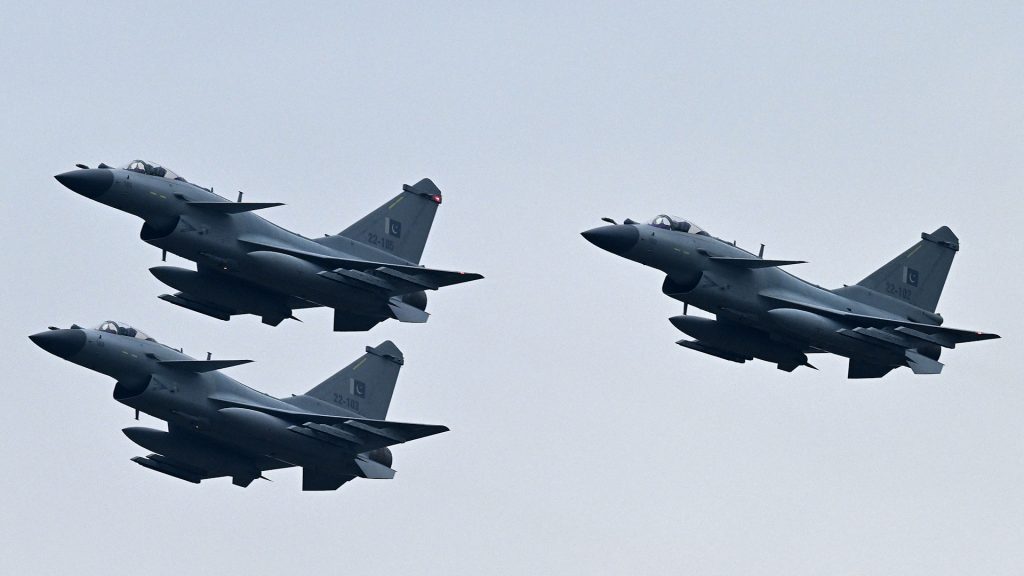China’s role in Pakistan-India conflict deeper than previously known

China appears to have played a more active role in Pakistan’s recent clash with India than previously known. Ashok Kumar of the Centre for Joint Warfare Studies (CENJOWS), a think tank tied to India’s Defence Ministry, said Chinese advisers helped Pakistan realign its air defenses and adjust satellite coverage. If confirmed, these reports point to Beijing’s direct involvement in what Bloomberg and The Telegraph call South Asia’s most serious military confrontation in nearly 50 years.
What kind of support did China provide to Pakistan?
China reportedly helped Pakistan realign its radar and air defense systems to better detect Indian troop and aircraft movements, Kumar said. He added that Chinese military advisers also assisted Pakistan in adjusting satellite surveillance over Indian territory during the two weeks between the April 22 attack that killed 26 Indian tourists and the start of open hostilities.
Kumar described the support as operational, enabling Pakistan to prepare for air engagements. Beijing has not confirmed the reports. According to Bloomberg, Chinese Foreign Ministry spokesperson Mao Ning reiterated China’s neutral stance and called for peace and stability in the region.
Were Chinese weapons used in combat?
Unbiased. Straight Facts.TM
China supplied 81% of Pakistan’s arms imports between 2020 and 2024, making Pakistan the world’s fifth-largest arms importer.

Pakistani officials confirmed that they deployed Chinese-made J-10C fighter jets and PL-15 air-to-air missiles during retaliatory strikes on May 7.
According to the Stockholm International Peace Research Institute, China remains Pakistan’s top military supplier, providing 81% of its arms imports between 2020 and 2024, up from 74% in the previous five-year period. Pakistan’s arms imports rose 61% during that time, as the country expanded its procurement of fighter jets, frigates and other major weapons systems, making it the world’s fifth-largest arms importer.
Andrew Small, a Berlin-based senior fellow at the German Marshall Fund, noted that the strikes marked the first known combat use of the J-10C jet and PL-15 missiles, giving China a live demonstration of its advanced weapons systems.
According to Pakistan, its forces shot down six Indian fighter jets during the exchange, including three French-made Rafales. India has not confirmed any aircraft losses.
How did India respond to the conflict?
Indian authorities blamed Pakistan for orchestrating the assault. Pakistan denied involvement and called for an international investigation.
“We call upon Pakistan to take appropriate steps to address these violations and deal with the situation with seriousness and responsibility,” Indian Foreign Secretary Vikram Misri said.
“We believe that any issues in the smooth implementation of the ceasefire should be addressed through communication at appropriate levels,” Pakistan’s Foreign Ministry said.
A ceasefire agreement took effect on May 10. President Donald Trump publicly claimed credit for brokering the deal, but Indian officials have since described the truce as a bilateral agreement between India and Pakistan with little external mediation.
What are the broader strategic implications?
Kumar said the recent conflict reinforced a growing strategic concern in India: the possibility of a “two-front situation” in which it could face simultaneous military pressure from both Pakistan and China. He explained that India increasingly views these two neighboring powers as interconnected threats and has begun incorporating this scenario into nearly all levels of military planning.
While China may not directly intervene unless the situation becomes critical, Kumar warned that Pakistan will likely support China in any future confrontation, effectively linking their security postures.
“Anything which is with China today,” he said, “can be deemed to be with Pakistan tomorrow.”
Defense analysts say Pakistan’s use of Chinese weapons served as a public demonstration of Beijing’s military capabilities. The combat debut of the J-10C and PL-15 has prompted military experts, including those at Taiwan’s Institute of National Defense and Security Research and analysts cited by Bloomberg, to reevaluate China’s air combat potential and its implications for regional planning, including Taiwan’s defense posture.
“We may need to reassess the PLA’s air combat capabilities, which may be approaching or even surpassing the level of U.S. air power deployments in East Asia,” Shu Hsiao-Huang, an associate research fellow at the Taiwan defence ministry-linked Institute of National Defense and Security Research, told Bloomberg.
What happens next?
Pakistani Deputy Prime Minister Ishaq Dar plans to meet Chinese Foreign Minister Wang Yi in Beijing this week. According to Pakistan’s Foreign Ministry, the two sides plan to discuss the regional fallout and review broader bilateral ties.
While both India and Pakistan have indicated a willingness to hold the ceasefire, they remain at odds over responsibility for the conflict and the long-term implications of Chinese involvement.





